Papers by Reinier W Akkermans
Natuurhistorisch Maandblad, 2024
RAGLIUS ALBOACUMINATUS (LYGAEIDAE) REDISCOVERED IN THE NETHERLANDS
On March 3, 2024, a specimen ... more RAGLIUS ALBOACUMINATUS (LYGAEIDAE) REDISCOVERED IN THE NETHERLANDS
On March 3, 2024, a specimen of the bug Raglius alboacuminatus was found in Mook (province of Limburg). During a second visit on 20 March,
about ten specimens of this species were spotted, which suggests the existence of a small population. The last known observations, in Vlodrop and Roermond, also in the province of Limburg, dated from 1951. The present observation indicates the species has been rediscovered after 73 years and can be included in the list of Dutch species.
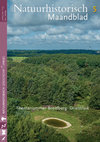
Natuurhistorisch Maandblad, 2024
ONE YEAR OF SURVEYING BUGS (HETEROPTERA) AT THE BREIDBERG-DRIESTRUIK RESERVE
Although the Breidbe... more ONE YEAR OF SURVEYING BUGS (HETEROPTERA) AT THE BREIDBERG-DRIESTRUIK RESERVE
Although the Breidberg-Driestruik is a relatively small nature area, covering only 53 hectares, one year of research (2022) yielded 179 different species of Heteroptera. Strikingly, 23% of the species encountered were rare or semi-rare, including Dictyonota strichnocera, Psallus aethiops and Deraeocoris punctulatus. The great diversity of Heteroptera species is partially the result of the variety of habitats, ranging from grassland to heathland and forest, interspersed with water bodies. The location of the Breidberg-Driestruik area likely plays a role as well. Surrounded by industrial, urban, and farming areas, the Breidberg-Driestruik forms a stepping-stone between the nature reserves of Roerdal and Meinweg. Thirty years after its creation as a nature compensation area, the area
now appears especially suitable for bugs.
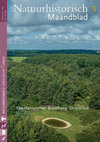
Natuurhistorisch Maandblad, 2024
THE LARGE LADYBIRD SPECIES (CHILOCORINAE, COCCINELLINAE AND EPILACHNINAE) AT THE BREIDBERG-DRIEST... more THE LARGE LADYBIRD SPECIES (CHILOCORINAE, COCCINELLINAE AND EPILACHNINAE) AT THE BREIDBERG-DRIESTRUIK NATURE AREA.
Although the Breidberg-Driestruik area was not specifically surveyed for ladybirds, a good impression of the presence of large ladybird species in the area was obtained in 2022, in the form of accidental findings during a bug survey. A total of 22 species were found, particularly interesting findings being the Black ladybird (Exochomus nigromaculatus) on a heathland remnant, and the Wood ant ladybird (Coccinella magnifica) in the vicinity of ants’ nests. The observations from 2022 have been compared with records of the ladybird species known to have
occurred there in 2015-2021. The most common species is the Asian ladybird (Harmonia axyridis), followed by three also hardly
critical ones: Four-spotted ladybird (Exochomus quadripustulatus), Ten-spotted ladybird (Adalia decempunctata) and Seven-spotted ladybird (Coccinella septempunctata). An exception is the fifth species,
the regionally present Fourteen-spotted ladybird (Coccinula quatuordecimpustulata), which is very rare in the rest of the Netherlands, whereas it has a massive presence at Breidberg-Driestruik. The results show that the Breidberg-Driestruik area hosts urban as well as heathland species. As far as ladybirds are concerned, this nature area apparently represents an intermediate between an urban biotope and a nature reserve, which is not surprising given the area’s location adjacent to an industrial estate.
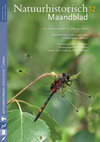
Natuurhistorisch Maandblad, 2023
TWO NEW FLAT BUGS (ARADIDAE) FOR THE DUTCH PROVINCE OF LIMBURG: ARADUS SIGNATICORNIS AND ARADUS B... more TWO NEW FLAT BUGS (ARADIDAE) FOR THE DUTCH PROVINCE OF LIMBURG: ARADUS SIGNATICORNIS AND ARADUS BETULAE
In 2022, two species of fl at bugs new to Limburg were found at the Landgoed de Hamert nature reserve in the northern part of the province of Limburg. Aradus signaticornis was found on a Pine tree (Pinus sylvestris). Although this species is associated with forest fires, there has been no fire
on the plot in question. After more than forty years, this species has now
been found again in the Netherlands.
The second new species, which was found in the same nature reserve, is Aradus betulae. Given the increasing number of observations of this species in the Netherlands, its occurrence in Limburg was to be expected. Just like elsewhere in the Netherlands, this species is here also associated with the Tinder fungus (Fomes fomentarius) on infected trunks of beach (Betula spec.).
Natuurhistorisch Maandblad, 2023
FIRST OBSERVATION OF HOLCOCRANUM SATUREJAE (LYGAEIDAE) IN LIMBURG,
THE SECOND FOR THE NETHERLAN... more FIRST OBSERVATION OF HOLCOCRANUM SATUREJAE (LYGAEIDAE) IN LIMBURG,
THE SECOND FOR THE NETHERLANDS.
On 14 March 2022, one specimen of the bug Holcocranum saturejae (Lygaeidae) was caught in the Koningssteen habitat development area (municipality of Thorn) in the
Dutch province of Limburg. This catch represents the second observation of this species in the Netherlands. The location is remarkable in the sense that the species’ host plants Reed (Phragmites australis) and Reedmace (Typha spec.) are not present there. Instead, the site features various species of Willow (Salix spec.). Despite intensive search efforts one month later, no second specimen was found at this location, so it can be concluded that the specimen concerns a vagrant.
Natuurhistorisch Maandblad, 2023
HETEROPTERA AT THE ROZENDAAL ESTATE (DUTCH LIMBURG)
The land bugs at the Rozendaal estate were s... more HETEROPTERA AT THE ROZENDAAL ESTATE (DUTCH LIMBURG)
The land bugs at the Rozendaal estate were surveyed by a group of ten people on 19 and 20 June 2021, while the water bugs were surveyed on 22 October of the same year. In addition, a few specific biotopes were visited. All in all, 160 species were observed in this area in 2021. Not only common species were found, but also species that are rare in the Netherlands, like Dicyphus annulatus, Amblytylus brevicollis and Isometopus intrusus. In the previous 20 years, 104 species were already known to occur in this area, and the new findings bring the total to 183 species. This research shows that a good overview of the bug fauna present can be obtained with a few targeted surveys.
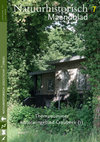
Natuurhistorisch Maandblad, 2022
BUGS (HETEROPTERA) OF THE CRAUBEEK WATER EXTRACTION AREA
In 2020 and 2021 sites belonging to the ... more BUGS (HETEROPTERA) OF THE CRAUBEEK WATER EXTRACTION AREA
In 2020 and 2021 sites belonging to the water extraction area near Craubeek and owned by the local water board ‘Waterleiding Maatschappij Limburg’ were examined for bugs. The habitats at this site mainly consist of grasslands surrounded by shrubbery. There is also an old limestone quarry whose bottom is filled with loamy soil. In these two years, 105 species of bugs were found, a fifth of them concerning rare species for the Netherlands. These rarities, like Heterocordylus tumidicornis or Derephysia sinuatocollis, are predominantly species with a wider presence in southern Limburg. Many of these southern species have started to spread and extend their distribution northwards as a result of climate change. The number of habitats in Craubeek is limited as, for instance, open water or coniferous woodland are lacking, hence the number of bug species at the Craubeek area is rather limited.
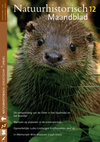
Natuurhistorisch Maandblad, 2021
BUGS ON PLANE TREES (PLATANUS SPEC.) IN WINTER, WITH SPECIAL FOCUS ON ANTHOCORIDAE
Between Novemb... more BUGS ON PLANE TREES (PLATANUS SPEC.) IN WINTER, WITH SPECIAL FOCUS ON ANTHOCORIDAE
Between November 2020 and January 2021, research was carried out into Heteroptera on plane trees (Platanus spec.) in the Dutch province of Limburg. This research focused mainly on Anthocoridae, a small group of Heteroptera that is often overlooked. Strikingly, Brachysteles parvicornis and Dufouriellus ater were found to be rather common, even though the literature refers to them as rare. Both Brachysteles
parvicornis and Dufouriellus ater seem to reproduce under the bark of planes, and the latter seems to be present there year-round. Xylocoridea brevipennis, a newcomer present in the Netherlands since 2012, is also strongly restricted to planes. Additionally, Anthocoris gallarumulmi, an Elm (Ulmus spec.)-bound member of the Anthocoridae, seems to prefer the plane as a winter habitat. Finally, an update of the distribution of Corythucha ciliata (Tingidae) in Limburg has been added. This pecies seems to be expanding its range northwards by 10 to 20 km a year. The research on planes shows that field work in winter yields much dditional information about the spread of Anthocoridae.
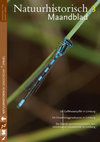
Natuurhistorisch Maandblad , Mar 1, 2021
RAPID INCREASE OF SEHIRUS MORIO IN THE DUTCH PROVINCE OF LIMBURG
After two decades of absence, ... more RAPID INCREASE OF SEHIRUS MORIO IN THE DUTCH PROVINCE OF LIMBURG
After two decades of absence, the bug Sehirus morio was rediscovered in Limburg in 2019. Then, in 2020, the species was found in large numbers near the village of Ospeldijk on Anchusa arvensis and near the town of Venray on Amsinckia micrantha. Thereafter, known sites with both plant species in Limburg were investigated for the presence of Sehirus bugs. Previous research had shown that body features are not conclusive for identifying Sehirus morio. Only when the sex is taken into account, can the body size be conclusive. Based on this sex–size criterium, Sehirus morio was identified with certainty at 21 locations in central and northern Limburg. The species has not yet been encountered in southern Limburg. Follow-up research in 2021 should verify if Sehirus morio is indeed absent there.
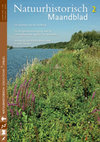
Natuurhistorisch Maandblad, 2021
THE HETEROPTERA OF THE STALBERG AREA.
Stalberg, an elongated grassland site located between the ... more THE HETEROPTERA OF THE STALBERG AREA.
Stalberg, an elongated grassland site located between the river Meuse and the river dunes of the De Hamert nature area, located between Arcen and Wellerlooi in the Dutch province of Limburg, was examined for bugs (Heteroptera). The site is approximately 1.5 km long, between 50 and 175 m wide, and has a total surface area of 12 ha. The difference in levation between the river and the edge of the forest at the top of this site is approximately 10 m. As a result of this difference, the grassland can become inundated to a varying extent during high water levels in the river, the top edge being completely free of flooding. The substrate at the lowest part is relatively clayey and wet, while the upper end is sandy and dry. These differences in substrate and humidity, as well as occasional flooding, have led to the development of a transversal gradient of vegetations. This zoning comprises a wealth of plant species and habitats in a relatively small area, offering habitats to a multitude of bug species. The Stalberg was examined for Heteroptera in the 2010-2019 period. The great variety of vegetations and plant species is reflected in the number of bugs species found there. Of the 525 bug species observed in Limburg during the study period, 163 (30%) were recorded at the Stalberg site. The species also include rare ones, such as Phytocoris
nowickyi, Empicoris rubromaculatus, Heterocordylus tumidicornis and Oncochila simplex. It may be concluded that Stalberg is not only an important area for vegetation, but also for Heteroptera.
Natuurhistorisch Maandblad, 2020
Two new Lygaeidae were discovered in the Dutch province of Limburg in 2020: Spilostethus saxatili... more Two new Lygaeidae were discovered in the Dutch province of Limburg in 2020: Spilostethus saxatilis and Spilostethus pandurus. Of Spilostethus saxatilis two populations has been found (adults and nymphs), especially at Eys there is a large population. The host plant in both cases is Colchicum autumnale. The previous sighting of Spilostethus saxatilis in Limburg dates from 1884. The observation of Spilostethus pandurus near Nederweert is the first in Limburg. In the Netherlands this species has been found once before in a house in Amsterdam. This presumably concerned a dragged specimen. The site in Nederweert is a nature reserve, so this probably concerns a vagrant.
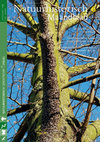
Natuurhistorisch Maandblad, 2020
THE BUG OXYCARENUS LAVATERAE IN THE PROVINCE OF LIMBURG (NL)
The first observation of Oxycarenus ... more THE BUG OXYCARENUS LAVATERAE IN THE PROVINCE OF LIMBURG (NL)
The first observation of Oxycarenus lavaterae in Limburg, near the city of Maastricht, dates back to 2016. The species was also found at this location in 2017. In 2018, the species had disappeared there, but was found at three different locations in the province (while 7 sightings were also reported from the eastern part of the adjacent province of Noord-Brabant). In 2019, the species suddenly spread massively across the entire province. By the end of 2019, the species had been reported from 90% of the 5x5 km squares in Limburg. O. lavaterae mainly occurs on Small-leaved lime (Tilia cordata). The species has also been found a few times on Althea shrub (Hibiscus syriacus) and Silver-lime (Tilia tomentosa). The preference for Small-leaved lime has also been found elsewhere in Europe, and has to do with the fact that the seeds of other lime-species are too tough. O. lavaterae is known not to tolerate harsh winters, as temperatures of -15 ˚C are lethal. The winter of 2018-2019 was very mild, in contrast to the preceding
winters, which may explain the sudden spread in 2019. In autumn and winter, the bugs form large aggregations of thousands of specimens on lime-trees. The observation of nymphs (instars 4 and 5) in the middle of the winter at these aggregations points to the possibility of a second partial generation.
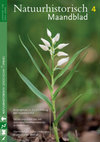
Natuurhistorisch Maandblad, 2020
FIRST POPULATION OF THE LADYBIRD HIPPODAMIA UNDECIMNOTATA DISCOVERED IN
THE NETHERLANDS
A small b... more FIRST POPULATION OF THE LADYBIRD HIPPODAMIA UNDECIMNOTATA DISCOVERED IN
THE NETHERLANDS
A small breeding population of the ladybird Hippodamia undecimnotata (Schneider) was discovered in August 2019 in the Stadsweide nature reserve in the floodplains of the river Meuse in the municipality of Roermond. The species was not found in this area during a 2015 survey of Coccinellidae in Roermond, and was hitherto not known from the Netherlands.
From the beginning of August until the end of November, Hippodamia undecimnotata was found in rough grassland grazed by Galloway cattle. Larvae, pupae and adults were mainly found on stems, leaves and flower heads of Welted thistle (Carduus crispus) in the summer
period, and later in the year, after most Carduus crispus had withered, also on remaining flower heads of Creeping thistle (Cirsium arvense) and Tansy (Tanacetum vulgare). The species probably arrived in the area in 2018 or 2019 from a south-easterly direction, from the valley of the river Rhine in Germany. There the species has been extending its distribution area northwards in recent years, as shown by the considerably increased number of records. The future will tell whether Hippodamia undecimnotata will survive winter floods in the Stadsweide floodplains, and is able to expand its distribution area to other floodplains along the river Meuse or even more northwards to floodplains of the rivers Waal and Rhine.
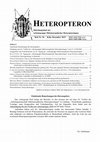
Heteropteron, 2019
In der Niederländischen Provinz Limburg wurde Ende 2016 eine Arbeitsgruppe eingerichtet, die sich... more In der Niederländischen Provinz Limburg wurde Ende 2016 eine Arbeitsgruppe eingerichtet, die sich mit Wanzen befasst. Die Limburgische Wanzen-Arbeitsgruppe umfasst etwa 20 Personen und ist der KÖNIGLICHEN NATURHISTORISCHEN VEREINIGUNG LIMBURG, NHGL) zugeordnet.
Wie fördert nun eine solche regionale Arbeitsgruppe die Kenntnisse über Wanzen? Ziel ist, die Verbreitung der Wanzenarten in der Provinz Limburg besser kennen zu lernen. Um dies zu erreichen, musste als erstes die Artenkenntnis der Mitarbeiter aufgebaut werden, denn es gab natürlich nicht bereits 20 Wanzen-Experten.
Zu Beginn wurden jährlich zehn Exkursionen in verschiedene Bereiche der Provinz organisiert. Dabei kommen in Abhängigkeit vom Gelände jedesmal neue Aspekte zum Vorschein. Die gemeinschaftlichen Exkursionen sorgten für eine schnelle Ausbreitung der Kenntnisse. Wird etwas zusammen ’entdeckt’, gibt es einen schnellen Erfahrungsaustausch innerhalb der Gruppe. Dadurch haben sich gute Kenntnisse darüber entwickelt, wo welche Wanzenart gesucht werden kann.
Das ’Sammeln’ der Wanzen erfolgt großenteils bereits digital. Von allen gefundenen Wanzen wird ein Foto gemacht, das einschließlich der GPS-Koordinaten auf Waarneming.nl hochgeladen wird, dem Internet-basierten Erfassungssystem für Naturbeobachtungen in den Niederlanden. Auf Waarneming.nl werden die Beobachtungen durch Experten überprüft (validiert). Zwischen 2017 und 2019 ist so für die Provinz Limburg eine Datenbank mit beinahe 50.000 validierten Datensätzen aufgebaut worden. Schnell wurden erste Ergebnisse sichtbar. Von allen Wanzenbeobachtungen in den Niederlanden stammen rund 25% aus der Provinz Limburg.
Die Aktivität der Wanzen-Arbeitsgruppe in Limburg ist ein Beispiel für citizen science, indem sich eine kleine Gruppe interessierter Menschen mit den richtigen Hilfsmitteln und mitsachkundiger Unterstützung in kurzer Zeit eine ganze Insektengruppe erschließen konnte.
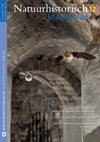
Natuurhistorisch Maandblad, 2019
FIRST OBSERVATIONS OF THE BUG COPTOSOMA SCUTELLATUM IN THE NETHERLANDS
On 4 July 2019, the first ... more FIRST OBSERVATIONS OF THE BUG COPTOSOMA SCUTELLATUM IN THE NETHERLANDS
On 4 July 2019, the first specimen of the bug Coptosoma scutellatum in the Netherlands was found near the town of Vaals in the Province of Limburg, in a meadow near the Belgian border. The next day, a second specimen was found at the ’t Rooth quarry near the village of Bemelen, approximately 20 km from the first site. They represent the first records for the Netherlands. Despite intensive search, no other specimens were found at either of these localities. The vegetation has been mapped at both locations, but no known host plants were present. Both sites therefore do not seem to present a suitable habitat. The fact that even after intensive search no other specimens were found, suggest stragglers, rather than local populations. One month later, on 3 August, three specimens of Coptosoma scutellatum were found in the nature garden in Vijlen, by sweeping a large patch of Crown vetch (Securigera varia), its favoured host plant. Unlike the other two sites, this location offers a suitable habitat, suggesting the presence of a small population of the species. With these observations of Coptosoma scutellatum at three different locations, the prediction by Reclaire from 1935 that Coptosoma scutellatum would one day be found in Limburg, has finally come true after 84 years.
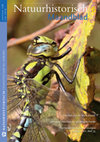
Natuurhistorisch Maandblad, 2019
LADYBIRDS (COCCINELLIDAE) OF THE BEEGDERHEIDE NATURE RESERVE
Four years of surveys have shown tha... more LADYBIRDS (COCCINELLIDAE) OF THE BEEGDERHEIDE NATURE RESERVE
Four years of surveys have shown that the Beegderheide nature reserve in Central Limburg (The Netherlands) harbours a considerable diversity of ladybirds. Twenty-four species were found, including populations of two nationally rare and declining species, Exochomus nigromaculatus and Coccinella magnifica. Continuation of the current heathland management seems desirable for Exochomus nigromaculatus, while the protection of anthills at Beegderheide could benefit Coccinella magnifica. Other striking findings are the populations of Myrrha octodecimguttata and Myzia oblongoguttata. For these species it is important that sufficient Scots pine (Pinus sylvestris) remain. Most other species can also be found elsewhere in the Netherlands. The species composition of Coccinellidae shows that the Beegderheide is a jewel among the nature reserves
in Central Limburg.
Natuurhistorisch Maandblad, 2017
HIBERNATING LADYBIRDS ON PLANES
While examining bugs under the bark of planes (Platanus spec.) hi... more HIBERNATING LADYBIRDS ON PLANES
While examining bugs under the bark of planes (Platanus spec.) hibernating ladybirds were frequently found. For species such as Harmonia quadripunctata, Oenopia conglobata and Platynaspis luteorubra, this research into winter quarters gives substantial additional information about their distribution. For example, the number of 25 km2 squares where Harmonia quadripuncta has been observed (from 2000 onwards) in the South of Limburg increased from 5 to 18.
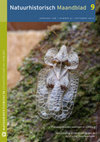
Natuurhistorisch Maandblad, 2017
PLANE TREE BOUND BUGS IN LIMBURG:
Arocatus longiceps and Corythucha ciliata A newspaper article h... more PLANE TREE BOUND BUGS IN LIMBURG:
Arocatus longiceps and Corythucha ciliata A newspaper article has sparked an investigation of plane trees (Platanus spec.) in the central and southern parts of the Dutch province of Limburg, to assess the occurrence of hibernating bugs. A total of 12 species of bugs were found hibernating on Planes. The main target was to map the distribution of Corythucha ciliata and Arocatus longiceps. The latter species was found everywhere where there were Planes, while Corythucha ciliata was only widespread in the south of Limburg. In the central part of the province, this species was only seen in Roermond, Venlo, Echt and Blerick. These finds may represent the first steps in a northwards expansion. In the rest of the Netherlands, there has only been a single observation, in the city of Den Bosch. In addition to these two monophagous bugs, Deraeocoris lutescens, Rhyparochromus vulgaris and Rhaphigaster nebulosa were also commonly found hibernating under the bark of Planes. Overall, it can be concluded that Planes are important trees for hibernating bugs (and other insects).

Entomologische Berichten, 2017
Comparison of the ladybeetle fauna of the city Roermond and the nature reserve the Meinweg (Coleo... more Comparison of the ladybeetle fauna of the city Roermond and the nature reserve the Meinweg (Coleoptera: Coccinellidae)
The ladybird fauna (Coccinelidae) of an urban area and those of a nature reserve are compared. The research in the city of Roermond was executed in 2015 and the research at the nature reserve the Meinweg in 2016. 22 species were recorded in Roermond, and 27 on the Meinweg. This difference is explained by the absence of species of heather and pine forest in the city. The Meinweg is typified by heathland, and deciduous and coniferous forest, while the urban area consists of gardens, parks, streets and ruderal terrain. This results in a clear difference in the fauna of ladybeetles between the urban area and the nature reserve. The Meinweg is inhabited by many heathland species, Chilocorus bipustulatus, Exochomus nigromaculatus, and coniferous forest species, Myzia oblongoguttata, Myrrha octodecimguttata, who lack a suitable habitat in the urban areas. There are however many other species which find their optimum in the urban area. These include two pioneer species Hippodamia variegata or Coccinella quinquepunctata, which profit from the many ruderal terrains. Also generalist species have a preference for the city and are found in the Meinweg mainly in the edge region, where the influence of man is largest. This is especially true for Adalia bipunctata and Oenopia conglobata, which were found across the whole urban area of Roermond, but were at de Meinweg restricted to the verges of the reserve. This is possibly caused by the preference of these species to hibernate during the winter in buildings. Another difference is the seemingly higher supply of aphids or plant lice in the city which might be caused by the soil being richer in nutrients in the city than that in nature reserve the Meinweg and possible by the plants being weaker in the city than in the reserve due to the urban conditions. Finally, there are species for which barely any difference was observed between the city and nature reserve. Some of these are generalists (Propylea quatuordecimpunctata, Coccinella septempunctata), but they also include a specialist like Aphidecta obliterata. The latter is largely restricted to Picea abies, but large solitary trees in both city and nature are already enough to sustain a population. The only species which was found to be omnipresent in both areas is the exotic species Harmonia axyridis. However the number of individuals of this species encountered on the Meinweg is lower than in the city of Roermond.

Natuurhistorisch Maandblad, 2017
LADYBIRDS AT THE MEINWEG NATIONAL PARK
The large ladybirds (Coccinellinae, Chilocorinae and Epila... more LADYBIRDS AT THE MEINWEG NATIONAL PARK
The large ladybirds (Coccinellinae, Chilocorinae and Epilachninae) in the Meinweg National Park were investigated from March to October 2016. A 24 square kilometre area was surveyed by sweeping through the vegetation or by shaking trees and shrubs. A total of 27 species were encountered.
Three species, Coccinella hieroglyphica, Oenopia impustulata and Anisosticta novemdecimpunctata, which were reported in a previous study, were not encountered in the present study. Two of them may still be present, however, but the status at the Meinweg of Oenopia impustulata, one of the rarest ladybird species in the Netherlands, is doubtful. Since the year 2000, 30 species of ladybirds have been reported from the Meinweg. Compared to the total of 35 for the Netherlands as a whole, this means that 80% of the Dutch species can be found at the Meinweg. Most species are confined to a specific habitat. Species typically found in coniferous forests are Myrrha octodecimguttata, Myzia oblongoguttata, Anatis ocellata and Harmonia quadripunctata. Typically found on moorlands are Chilocorus bipustulatus and Exochomus nigromaculatus. A number of (urban) species like Adalia bipunctata, Coccinella quinquepunctata and Psyllobora vingtiduopunctata are most prominently
present at the edges of the Meinweg area, where human influence is greatest.
Finally, species like Coccinella septempunctata, Harmonia axyridis and Propylea quatuordecimpunctata are present across the whole area. The only species found in every one-kilometre grid square is Harmonia axyridis, but it was far outnumbered by captured individuals of Coccinula quatuordecimpustulata. This is remarkable, since the distribution of the C. quatuordecimpustulata in the Netherlands is restricted to Central Limburg and Eastern Brabant.

Uploads
Papers by Reinier W Akkermans
On March 3, 2024, a specimen of the bug Raglius alboacuminatus was found in Mook (province of Limburg). During a second visit on 20 March,
about ten specimens of this species were spotted, which suggests the existence of a small population. The last known observations, in Vlodrop and Roermond, also in the province of Limburg, dated from 1951. The present observation indicates the species has been rediscovered after 73 years and can be included in the list of Dutch species.
Although the Breidberg-Driestruik is a relatively small nature area, covering only 53 hectares, one year of research (2022) yielded 179 different species of Heteroptera. Strikingly, 23% of the species encountered were rare or semi-rare, including Dictyonota strichnocera, Psallus aethiops and Deraeocoris punctulatus. The great diversity of Heteroptera species is partially the result of the variety of habitats, ranging from grassland to heathland and forest, interspersed with water bodies. The location of the Breidberg-Driestruik area likely plays a role as well. Surrounded by industrial, urban, and farming areas, the Breidberg-Driestruik forms a stepping-stone between the nature reserves of Roerdal and Meinweg. Thirty years after its creation as a nature compensation area, the area
now appears especially suitable for bugs.
Although the Breidberg-Driestruik area was not specifically surveyed for ladybirds, a good impression of the presence of large ladybird species in the area was obtained in 2022, in the form of accidental findings during a bug survey. A total of 22 species were found, particularly interesting findings being the Black ladybird (Exochomus nigromaculatus) on a heathland remnant, and the Wood ant ladybird (Coccinella magnifica) in the vicinity of ants’ nests. The observations from 2022 have been compared with records of the ladybird species known to have
occurred there in 2015-2021. The most common species is the Asian ladybird (Harmonia axyridis), followed by three also hardly
critical ones: Four-spotted ladybird (Exochomus quadripustulatus), Ten-spotted ladybird (Adalia decempunctata) and Seven-spotted ladybird (Coccinella septempunctata). An exception is the fifth species,
the regionally present Fourteen-spotted ladybird (Coccinula quatuordecimpustulata), which is very rare in the rest of the Netherlands, whereas it has a massive presence at Breidberg-Driestruik. The results show that the Breidberg-Driestruik area hosts urban as well as heathland species. As far as ladybirds are concerned, this nature area apparently represents an intermediate between an urban biotope and a nature reserve, which is not surprising given the area’s location adjacent to an industrial estate.
In 2022, two species of fl at bugs new to Limburg were found at the Landgoed de Hamert nature reserve in the northern part of the province of Limburg. Aradus signaticornis was found on a Pine tree (Pinus sylvestris). Although this species is associated with forest fires, there has been no fire
on the plot in question. After more than forty years, this species has now
been found again in the Netherlands.
The second new species, which was found in the same nature reserve, is Aradus betulae. Given the increasing number of observations of this species in the Netherlands, its occurrence in Limburg was to be expected. Just like elsewhere in the Netherlands, this species is here also associated with the Tinder fungus (Fomes fomentarius) on infected trunks of beach (Betula spec.).
THE SECOND FOR THE NETHERLANDS.
On 14 March 2022, one specimen of the bug Holcocranum saturejae (Lygaeidae) was caught in the Koningssteen habitat development area (municipality of Thorn) in the
Dutch province of Limburg. This catch represents the second observation of this species in the Netherlands. The location is remarkable in the sense that the species’ host plants Reed (Phragmites australis) and Reedmace (Typha spec.) are not present there. Instead, the site features various species of Willow (Salix spec.). Despite intensive search efforts one month later, no second specimen was found at this location, so it can be concluded that the specimen concerns a vagrant.
The land bugs at the Rozendaal estate were surveyed by a group of ten people on 19 and 20 June 2021, while the water bugs were surveyed on 22 October of the same year. In addition, a few specific biotopes were visited. All in all, 160 species were observed in this area in 2021. Not only common species were found, but also species that are rare in the Netherlands, like Dicyphus annulatus, Amblytylus brevicollis and Isometopus intrusus. In the previous 20 years, 104 species were already known to occur in this area, and the new findings bring the total to 183 species. This research shows that a good overview of the bug fauna present can be obtained with a few targeted surveys.
In 2020 and 2021 sites belonging to the water extraction area near Craubeek and owned by the local water board ‘Waterleiding Maatschappij Limburg’ were examined for bugs. The habitats at this site mainly consist of grasslands surrounded by shrubbery. There is also an old limestone quarry whose bottom is filled with loamy soil. In these two years, 105 species of bugs were found, a fifth of them concerning rare species for the Netherlands. These rarities, like Heterocordylus tumidicornis or Derephysia sinuatocollis, are predominantly species with a wider presence in southern Limburg. Many of these southern species have started to spread and extend their distribution northwards as a result of climate change. The number of habitats in Craubeek is limited as, for instance, open water or coniferous woodland are lacking, hence the number of bug species at the Craubeek area is rather limited.
Between November 2020 and January 2021, research was carried out into Heteroptera on plane trees (Platanus spec.) in the Dutch province of Limburg. This research focused mainly on Anthocoridae, a small group of Heteroptera that is often overlooked. Strikingly, Brachysteles parvicornis and Dufouriellus ater were found to be rather common, even though the literature refers to them as rare. Both Brachysteles
parvicornis and Dufouriellus ater seem to reproduce under the bark of planes, and the latter seems to be present there year-round. Xylocoridea brevipennis, a newcomer present in the Netherlands since 2012, is also strongly restricted to planes. Additionally, Anthocoris gallarumulmi, an Elm (Ulmus spec.)-bound member of the Anthocoridae, seems to prefer the plane as a winter habitat. Finally, an update of the distribution of Corythucha ciliata (Tingidae) in Limburg has been added. This pecies seems to be expanding its range northwards by 10 to 20 km a year. The research on planes shows that field work in winter yields much dditional information about the spread of Anthocoridae.
After two decades of absence, the bug Sehirus morio was rediscovered in Limburg in 2019. Then, in 2020, the species was found in large numbers near the village of Ospeldijk on Anchusa arvensis and near the town of Venray on Amsinckia micrantha. Thereafter, known sites with both plant species in Limburg were investigated for the presence of Sehirus bugs. Previous research had shown that body features are not conclusive for identifying Sehirus morio. Only when the sex is taken into account, can the body size be conclusive. Based on this sex–size criterium, Sehirus morio was identified with certainty at 21 locations in central and northern Limburg. The species has not yet been encountered in southern Limburg. Follow-up research in 2021 should verify if Sehirus morio is indeed absent there.
Stalberg, an elongated grassland site located between the river Meuse and the river dunes of the De Hamert nature area, located between Arcen and Wellerlooi in the Dutch province of Limburg, was examined for bugs (Heteroptera). The site is approximately 1.5 km long, between 50 and 175 m wide, and has a total surface area of 12 ha. The difference in levation between the river and the edge of the forest at the top of this site is approximately 10 m. As a result of this difference, the grassland can become inundated to a varying extent during high water levels in the river, the top edge being completely free of flooding. The substrate at the lowest part is relatively clayey and wet, while the upper end is sandy and dry. These differences in substrate and humidity, as well as occasional flooding, have led to the development of a transversal gradient of vegetations. This zoning comprises a wealth of plant species and habitats in a relatively small area, offering habitats to a multitude of bug species. The Stalberg was examined for Heteroptera in the 2010-2019 period. The great variety of vegetations and plant species is reflected in the number of bugs species found there. Of the 525 bug species observed in Limburg during the study period, 163 (30%) were recorded at the Stalberg site. The species also include rare ones, such as Phytocoris
nowickyi, Empicoris rubromaculatus, Heterocordylus tumidicornis and Oncochila simplex. It may be concluded that Stalberg is not only an important area for vegetation, but also for Heteroptera.
The first observation of Oxycarenus lavaterae in Limburg, near the city of Maastricht, dates back to 2016. The species was also found at this location in 2017. In 2018, the species had disappeared there, but was found at three different locations in the province (while 7 sightings were also reported from the eastern part of the adjacent province of Noord-Brabant). In 2019, the species suddenly spread massively across the entire province. By the end of 2019, the species had been reported from 90% of the 5x5 km squares in Limburg. O. lavaterae mainly occurs on Small-leaved lime (Tilia cordata). The species has also been found a few times on Althea shrub (Hibiscus syriacus) and Silver-lime (Tilia tomentosa). The preference for Small-leaved lime has also been found elsewhere in Europe, and has to do with the fact that the seeds of other lime-species are too tough. O. lavaterae is known not to tolerate harsh winters, as temperatures of -15 ˚C are lethal. The winter of 2018-2019 was very mild, in contrast to the preceding
winters, which may explain the sudden spread in 2019. In autumn and winter, the bugs form large aggregations of thousands of specimens on lime-trees. The observation of nymphs (instars 4 and 5) in the middle of the winter at these aggregations points to the possibility of a second partial generation.
THE NETHERLANDS
A small breeding population of the ladybird Hippodamia undecimnotata (Schneider) was discovered in August 2019 in the Stadsweide nature reserve in the floodplains of the river Meuse in the municipality of Roermond. The species was not found in this area during a 2015 survey of Coccinellidae in Roermond, and was hitherto not known from the Netherlands.
From the beginning of August until the end of November, Hippodamia undecimnotata was found in rough grassland grazed by Galloway cattle. Larvae, pupae and adults were mainly found on stems, leaves and flower heads of Welted thistle (Carduus crispus) in the summer
period, and later in the year, after most Carduus crispus had withered, also on remaining flower heads of Creeping thistle (Cirsium arvense) and Tansy (Tanacetum vulgare). The species probably arrived in the area in 2018 or 2019 from a south-easterly direction, from the valley of the river Rhine in Germany. There the species has been extending its distribution area northwards in recent years, as shown by the considerably increased number of records. The future will tell whether Hippodamia undecimnotata will survive winter floods in the Stadsweide floodplains, and is able to expand its distribution area to other floodplains along the river Meuse or even more northwards to floodplains of the rivers Waal and Rhine.
Wie fördert nun eine solche regionale Arbeitsgruppe die Kenntnisse über Wanzen? Ziel ist, die Verbreitung der Wanzenarten in der Provinz Limburg besser kennen zu lernen. Um dies zu erreichen, musste als erstes die Artenkenntnis der Mitarbeiter aufgebaut werden, denn es gab natürlich nicht bereits 20 Wanzen-Experten.
Zu Beginn wurden jährlich zehn Exkursionen in verschiedene Bereiche der Provinz organisiert. Dabei kommen in Abhängigkeit vom Gelände jedesmal neue Aspekte zum Vorschein. Die gemeinschaftlichen Exkursionen sorgten für eine schnelle Ausbreitung der Kenntnisse. Wird etwas zusammen ’entdeckt’, gibt es einen schnellen Erfahrungsaustausch innerhalb der Gruppe. Dadurch haben sich gute Kenntnisse darüber entwickelt, wo welche Wanzenart gesucht werden kann.
Das ’Sammeln’ der Wanzen erfolgt großenteils bereits digital. Von allen gefundenen Wanzen wird ein Foto gemacht, das einschließlich der GPS-Koordinaten auf Waarneming.nl hochgeladen wird, dem Internet-basierten Erfassungssystem für Naturbeobachtungen in den Niederlanden. Auf Waarneming.nl werden die Beobachtungen durch Experten überprüft (validiert). Zwischen 2017 und 2019 ist so für die Provinz Limburg eine Datenbank mit beinahe 50.000 validierten Datensätzen aufgebaut worden. Schnell wurden erste Ergebnisse sichtbar. Von allen Wanzenbeobachtungen in den Niederlanden stammen rund 25% aus der Provinz Limburg.
Die Aktivität der Wanzen-Arbeitsgruppe in Limburg ist ein Beispiel für citizen science, indem sich eine kleine Gruppe interessierter Menschen mit den richtigen Hilfsmitteln und mitsachkundiger Unterstützung in kurzer Zeit eine ganze Insektengruppe erschließen konnte.
On 4 July 2019, the first specimen of the bug Coptosoma scutellatum in the Netherlands was found near the town of Vaals in the Province of Limburg, in a meadow near the Belgian border. The next day, a second specimen was found at the ’t Rooth quarry near the village of Bemelen, approximately 20 km from the first site. They represent the first records for the Netherlands. Despite intensive search, no other specimens were found at either of these localities. The vegetation has been mapped at both locations, but no known host plants were present. Both sites therefore do not seem to present a suitable habitat. The fact that even after intensive search no other specimens were found, suggest stragglers, rather than local populations. One month later, on 3 August, three specimens of Coptosoma scutellatum were found in the nature garden in Vijlen, by sweeping a large patch of Crown vetch (Securigera varia), its favoured host plant. Unlike the other two sites, this location offers a suitable habitat, suggesting the presence of a small population of the species. With these observations of Coptosoma scutellatum at three different locations, the prediction by Reclaire from 1935 that Coptosoma scutellatum would one day be found in Limburg, has finally come true after 84 years.
Four years of surveys have shown that the Beegderheide nature reserve in Central Limburg (The Netherlands) harbours a considerable diversity of ladybirds. Twenty-four species were found, including populations of two nationally rare and declining species, Exochomus nigromaculatus and Coccinella magnifica. Continuation of the current heathland management seems desirable for Exochomus nigromaculatus, while the protection of anthills at Beegderheide could benefit Coccinella magnifica. Other striking findings are the populations of Myrrha octodecimguttata and Myzia oblongoguttata. For these species it is important that sufficient Scots pine (Pinus sylvestris) remain. Most other species can also be found elsewhere in the Netherlands. The species composition of Coccinellidae shows that the Beegderheide is a jewel among the nature reserves
in Central Limburg.
While examining bugs under the bark of planes (Platanus spec.) hibernating ladybirds were frequently found. For species such as Harmonia quadripunctata, Oenopia conglobata and Platynaspis luteorubra, this research into winter quarters gives substantial additional information about their distribution. For example, the number of 25 km2 squares where Harmonia quadripuncta has been observed (from 2000 onwards) in the South of Limburg increased from 5 to 18.
Arocatus longiceps and Corythucha ciliata A newspaper article has sparked an investigation of plane trees (Platanus spec.) in the central and southern parts of the Dutch province of Limburg, to assess the occurrence of hibernating bugs. A total of 12 species of bugs were found hibernating on Planes. The main target was to map the distribution of Corythucha ciliata and Arocatus longiceps. The latter species was found everywhere where there were Planes, while Corythucha ciliata was only widespread in the south of Limburg. In the central part of the province, this species was only seen in Roermond, Venlo, Echt and Blerick. These finds may represent the first steps in a northwards expansion. In the rest of the Netherlands, there has only been a single observation, in the city of Den Bosch. In addition to these two monophagous bugs, Deraeocoris lutescens, Rhyparochromus vulgaris and Rhaphigaster nebulosa were also commonly found hibernating under the bark of Planes. Overall, it can be concluded that Planes are important trees for hibernating bugs (and other insects).
The ladybird fauna (Coccinelidae) of an urban area and those of a nature reserve are compared. The research in the city of Roermond was executed in 2015 and the research at the nature reserve the Meinweg in 2016. 22 species were recorded in Roermond, and 27 on the Meinweg. This difference is explained by the absence of species of heather and pine forest in the city. The Meinweg is typified by heathland, and deciduous and coniferous forest, while the urban area consists of gardens, parks, streets and ruderal terrain. This results in a clear difference in the fauna of ladybeetles between the urban area and the nature reserve. The Meinweg is inhabited by many heathland species, Chilocorus bipustulatus, Exochomus nigromaculatus, and coniferous forest species, Myzia oblongoguttata, Myrrha octodecimguttata, who lack a suitable habitat in the urban areas. There are however many other species which find their optimum in the urban area. These include two pioneer species Hippodamia variegata or Coccinella quinquepunctata, which profit from the many ruderal terrains. Also generalist species have a preference for the city and are found in the Meinweg mainly in the edge region, where the influence of man is largest. This is especially true for Adalia bipunctata and Oenopia conglobata, which were found across the whole urban area of Roermond, but were at de Meinweg restricted to the verges of the reserve. This is possibly caused by the preference of these species to hibernate during the winter in buildings. Another difference is the seemingly higher supply of aphids or plant lice in the city which might be caused by the soil being richer in nutrients in the city than that in nature reserve the Meinweg and possible by the plants being weaker in the city than in the reserve due to the urban conditions. Finally, there are species for which barely any difference was observed between the city and nature reserve. Some of these are generalists (Propylea quatuordecimpunctata, Coccinella septempunctata), but they also include a specialist like Aphidecta obliterata. The latter is largely restricted to Picea abies, but large solitary trees in both city and nature are already enough to sustain a population. The only species which was found to be omnipresent in both areas is the exotic species Harmonia axyridis. However the number of individuals of this species encountered on the Meinweg is lower than in the city of Roermond.
The large ladybirds (Coccinellinae, Chilocorinae and Epilachninae) in the Meinweg National Park were investigated from March to October 2016. A 24 square kilometre area was surveyed by sweeping through the vegetation or by shaking trees and shrubs. A total of 27 species were encountered.
Three species, Coccinella hieroglyphica, Oenopia impustulata and Anisosticta novemdecimpunctata, which were reported in a previous study, were not encountered in the present study. Two of them may still be present, however, but the status at the Meinweg of Oenopia impustulata, one of the rarest ladybird species in the Netherlands, is doubtful. Since the year 2000, 30 species of ladybirds have been reported from the Meinweg. Compared to the total of 35 for the Netherlands as a whole, this means that 80% of the Dutch species can be found at the Meinweg. Most species are confined to a specific habitat. Species typically found in coniferous forests are Myrrha octodecimguttata, Myzia oblongoguttata, Anatis ocellata and Harmonia quadripunctata. Typically found on moorlands are Chilocorus bipustulatus and Exochomus nigromaculatus. A number of (urban) species like Adalia bipunctata, Coccinella quinquepunctata and Psyllobora vingtiduopunctata are most prominently
present at the edges of the Meinweg area, where human influence is greatest.
Finally, species like Coccinella septempunctata, Harmonia axyridis and Propylea quatuordecimpunctata are present across the whole area. The only species found in every one-kilometre grid square is Harmonia axyridis, but it was far outnumbered by captured individuals of Coccinula quatuordecimpustulata. This is remarkable, since the distribution of the C. quatuordecimpustulata in the Netherlands is restricted to Central Limburg and Eastern Brabant.
On March 3, 2024, a specimen of the bug Raglius alboacuminatus was found in Mook (province of Limburg). During a second visit on 20 March,
about ten specimens of this species were spotted, which suggests the existence of a small population. The last known observations, in Vlodrop and Roermond, also in the province of Limburg, dated from 1951. The present observation indicates the species has been rediscovered after 73 years and can be included in the list of Dutch species.
Although the Breidberg-Driestruik is a relatively small nature area, covering only 53 hectares, one year of research (2022) yielded 179 different species of Heteroptera. Strikingly, 23% of the species encountered were rare or semi-rare, including Dictyonota strichnocera, Psallus aethiops and Deraeocoris punctulatus. The great diversity of Heteroptera species is partially the result of the variety of habitats, ranging from grassland to heathland and forest, interspersed with water bodies. The location of the Breidberg-Driestruik area likely plays a role as well. Surrounded by industrial, urban, and farming areas, the Breidberg-Driestruik forms a stepping-stone between the nature reserves of Roerdal and Meinweg. Thirty years after its creation as a nature compensation area, the area
now appears especially suitable for bugs.
Although the Breidberg-Driestruik area was not specifically surveyed for ladybirds, a good impression of the presence of large ladybird species in the area was obtained in 2022, in the form of accidental findings during a bug survey. A total of 22 species were found, particularly interesting findings being the Black ladybird (Exochomus nigromaculatus) on a heathland remnant, and the Wood ant ladybird (Coccinella magnifica) in the vicinity of ants’ nests. The observations from 2022 have been compared with records of the ladybird species known to have
occurred there in 2015-2021. The most common species is the Asian ladybird (Harmonia axyridis), followed by three also hardly
critical ones: Four-spotted ladybird (Exochomus quadripustulatus), Ten-spotted ladybird (Adalia decempunctata) and Seven-spotted ladybird (Coccinella septempunctata). An exception is the fifth species,
the regionally present Fourteen-spotted ladybird (Coccinula quatuordecimpustulata), which is very rare in the rest of the Netherlands, whereas it has a massive presence at Breidberg-Driestruik. The results show that the Breidberg-Driestruik area hosts urban as well as heathland species. As far as ladybirds are concerned, this nature area apparently represents an intermediate between an urban biotope and a nature reserve, which is not surprising given the area’s location adjacent to an industrial estate.
In 2022, two species of fl at bugs new to Limburg were found at the Landgoed de Hamert nature reserve in the northern part of the province of Limburg. Aradus signaticornis was found on a Pine tree (Pinus sylvestris). Although this species is associated with forest fires, there has been no fire
on the plot in question. After more than forty years, this species has now
been found again in the Netherlands.
The second new species, which was found in the same nature reserve, is Aradus betulae. Given the increasing number of observations of this species in the Netherlands, its occurrence in Limburg was to be expected. Just like elsewhere in the Netherlands, this species is here also associated with the Tinder fungus (Fomes fomentarius) on infected trunks of beach (Betula spec.).
THE SECOND FOR THE NETHERLANDS.
On 14 March 2022, one specimen of the bug Holcocranum saturejae (Lygaeidae) was caught in the Koningssteen habitat development area (municipality of Thorn) in the
Dutch province of Limburg. This catch represents the second observation of this species in the Netherlands. The location is remarkable in the sense that the species’ host plants Reed (Phragmites australis) and Reedmace (Typha spec.) are not present there. Instead, the site features various species of Willow (Salix spec.). Despite intensive search efforts one month later, no second specimen was found at this location, so it can be concluded that the specimen concerns a vagrant.
The land bugs at the Rozendaal estate were surveyed by a group of ten people on 19 and 20 June 2021, while the water bugs were surveyed on 22 October of the same year. In addition, a few specific biotopes were visited. All in all, 160 species were observed in this area in 2021. Not only common species were found, but also species that are rare in the Netherlands, like Dicyphus annulatus, Amblytylus brevicollis and Isometopus intrusus. In the previous 20 years, 104 species were already known to occur in this area, and the new findings bring the total to 183 species. This research shows that a good overview of the bug fauna present can be obtained with a few targeted surveys.
In 2020 and 2021 sites belonging to the water extraction area near Craubeek and owned by the local water board ‘Waterleiding Maatschappij Limburg’ were examined for bugs. The habitats at this site mainly consist of grasslands surrounded by shrubbery. There is also an old limestone quarry whose bottom is filled with loamy soil. In these two years, 105 species of bugs were found, a fifth of them concerning rare species for the Netherlands. These rarities, like Heterocordylus tumidicornis or Derephysia sinuatocollis, are predominantly species with a wider presence in southern Limburg. Many of these southern species have started to spread and extend their distribution northwards as a result of climate change. The number of habitats in Craubeek is limited as, for instance, open water or coniferous woodland are lacking, hence the number of bug species at the Craubeek area is rather limited.
Between November 2020 and January 2021, research was carried out into Heteroptera on plane trees (Platanus spec.) in the Dutch province of Limburg. This research focused mainly on Anthocoridae, a small group of Heteroptera that is often overlooked. Strikingly, Brachysteles parvicornis and Dufouriellus ater were found to be rather common, even though the literature refers to them as rare. Both Brachysteles
parvicornis and Dufouriellus ater seem to reproduce under the bark of planes, and the latter seems to be present there year-round. Xylocoridea brevipennis, a newcomer present in the Netherlands since 2012, is also strongly restricted to planes. Additionally, Anthocoris gallarumulmi, an Elm (Ulmus spec.)-bound member of the Anthocoridae, seems to prefer the plane as a winter habitat. Finally, an update of the distribution of Corythucha ciliata (Tingidae) in Limburg has been added. This pecies seems to be expanding its range northwards by 10 to 20 km a year. The research on planes shows that field work in winter yields much dditional information about the spread of Anthocoridae.
After two decades of absence, the bug Sehirus morio was rediscovered in Limburg in 2019. Then, in 2020, the species was found in large numbers near the village of Ospeldijk on Anchusa arvensis and near the town of Venray on Amsinckia micrantha. Thereafter, known sites with both plant species in Limburg were investigated for the presence of Sehirus bugs. Previous research had shown that body features are not conclusive for identifying Sehirus morio. Only when the sex is taken into account, can the body size be conclusive. Based on this sex–size criterium, Sehirus morio was identified with certainty at 21 locations in central and northern Limburg. The species has not yet been encountered in southern Limburg. Follow-up research in 2021 should verify if Sehirus morio is indeed absent there.
Stalberg, an elongated grassland site located between the river Meuse and the river dunes of the De Hamert nature area, located between Arcen and Wellerlooi in the Dutch province of Limburg, was examined for bugs (Heteroptera). The site is approximately 1.5 km long, between 50 and 175 m wide, and has a total surface area of 12 ha. The difference in levation between the river and the edge of the forest at the top of this site is approximately 10 m. As a result of this difference, the grassland can become inundated to a varying extent during high water levels in the river, the top edge being completely free of flooding. The substrate at the lowest part is relatively clayey and wet, while the upper end is sandy and dry. These differences in substrate and humidity, as well as occasional flooding, have led to the development of a transversal gradient of vegetations. This zoning comprises a wealth of plant species and habitats in a relatively small area, offering habitats to a multitude of bug species. The Stalberg was examined for Heteroptera in the 2010-2019 period. The great variety of vegetations and plant species is reflected in the number of bugs species found there. Of the 525 bug species observed in Limburg during the study period, 163 (30%) were recorded at the Stalberg site. The species also include rare ones, such as Phytocoris
nowickyi, Empicoris rubromaculatus, Heterocordylus tumidicornis and Oncochila simplex. It may be concluded that Stalberg is not only an important area for vegetation, but also for Heteroptera.
The first observation of Oxycarenus lavaterae in Limburg, near the city of Maastricht, dates back to 2016. The species was also found at this location in 2017. In 2018, the species had disappeared there, but was found at three different locations in the province (while 7 sightings were also reported from the eastern part of the adjacent province of Noord-Brabant). In 2019, the species suddenly spread massively across the entire province. By the end of 2019, the species had been reported from 90% of the 5x5 km squares in Limburg. O. lavaterae mainly occurs on Small-leaved lime (Tilia cordata). The species has also been found a few times on Althea shrub (Hibiscus syriacus) and Silver-lime (Tilia tomentosa). The preference for Small-leaved lime has also been found elsewhere in Europe, and has to do with the fact that the seeds of other lime-species are too tough. O. lavaterae is known not to tolerate harsh winters, as temperatures of -15 ˚C are lethal. The winter of 2018-2019 was very mild, in contrast to the preceding
winters, which may explain the sudden spread in 2019. In autumn and winter, the bugs form large aggregations of thousands of specimens on lime-trees. The observation of nymphs (instars 4 and 5) in the middle of the winter at these aggregations points to the possibility of a second partial generation.
THE NETHERLANDS
A small breeding population of the ladybird Hippodamia undecimnotata (Schneider) was discovered in August 2019 in the Stadsweide nature reserve in the floodplains of the river Meuse in the municipality of Roermond. The species was not found in this area during a 2015 survey of Coccinellidae in Roermond, and was hitherto not known from the Netherlands.
From the beginning of August until the end of November, Hippodamia undecimnotata was found in rough grassland grazed by Galloway cattle. Larvae, pupae and adults were mainly found on stems, leaves and flower heads of Welted thistle (Carduus crispus) in the summer
period, and later in the year, after most Carduus crispus had withered, also on remaining flower heads of Creeping thistle (Cirsium arvense) and Tansy (Tanacetum vulgare). The species probably arrived in the area in 2018 or 2019 from a south-easterly direction, from the valley of the river Rhine in Germany. There the species has been extending its distribution area northwards in recent years, as shown by the considerably increased number of records. The future will tell whether Hippodamia undecimnotata will survive winter floods in the Stadsweide floodplains, and is able to expand its distribution area to other floodplains along the river Meuse or even more northwards to floodplains of the rivers Waal and Rhine.
Wie fördert nun eine solche regionale Arbeitsgruppe die Kenntnisse über Wanzen? Ziel ist, die Verbreitung der Wanzenarten in der Provinz Limburg besser kennen zu lernen. Um dies zu erreichen, musste als erstes die Artenkenntnis der Mitarbeiter aufgebaut werden, denn es gab natürlich nicht bereits 20 Wanzen-Experten.
Zu Beginn wurden jährlich zehn Exkursionen in verschiedene Bereiche der Provinz organisiert. Dabei kommen in Abhängigkeit vom Gelände jedesmal neue Aspekte zum Vorschein. Die gemeinschaftlichen Exkursionen sorgten für eine schnelle Ausbreitung der Kenntnisse. Wird etwas zusammen ’entdeckt’, gibt es einen schnellen Erfahrungsaustausch innerhalb der Gruppe. Dadurch haben sich gute Kenntnisse darüber entwickelt, wo welche Wanzenart gesucht werden kann.
Das ’Sammeln’ der Wanzen erfolgt großenteils bereits digital. Von allen gefundenen Wanzen wird ein Foto gemacht, das einschließlich der GPS-Koordinaten auf Waarneming.nl hochgeladen wird, dem Internet-basierten Erfassungssystem für Naturbeobachtungen in den Niederlanden. Auf Waarneming.nl werden die Beobachtungen durch Experten überprüft (validiert). Zwischen 2017 und 2019 ist so für die Provinz Limburg eine Datenbank mit beinahe 50.000 validierten Datensätzen aufgebaut worden. Schnell wurden erste Ergebnisse sichtbar. Von allen Wanzenbeobachtungen in den Niederlanden stammen rund 25% aus der Provinz Limburg.
Die Aktivität der Wanzen-Arbeitsgruppe in Limburg ist ein Beispiel für citizen science, indem sich eine kleine Gruppe interessierter Menschen mit den richtigen Hilfsmitteln und mitsachkundiger Unterstützung in kurzer Zeit eine ganze Insektengruppe erschließen konnte.
On 4 July 2019, the first specimen of the bug Coptosoma scutellatum in the Netherlands was found near the town of Vaals in the Province of Limburg, in a meadow near the Belgian border. The next day, a second specimen was found at the ’t Rooth quarry near the village of Bemelen, approximately 20 km from the first site. They represent the first records for the Netherlands. Despite intensive search, no other specimens were found at either of these localities. The vegetation has been mapped at both locations, but no known host plants were present. Both sites therefore do not seem to present a suitable habitat. The fact that even after intensive search no other specimens were found, suggest stragglers, rather than local populations. One month later, on 3 August, three specimens of Coptosoma scutellatum were found in the nature garden in Vijlen, by sweeping a large patch of Crown vetch (Securigera varia), its favoured host plant. Unlike the other two sites, this location offers a suitable habitat, suggesting the presence of a small population of the species. With these observations of Coptosoma scutellatum at three different locations, the prediction by Reclaire from 1935 that Coptosoma scutellatum would one day be found in Limburg, has finally come true after 84 years.
Four years of surveys have shown that the Beegderheide nature reserve in Central Limburg (The Netherlands) harbours a considerable diversity of ladybirds. Twenty-four species were found, including populations of two nationally rare and declining species, Exochomus nigromaculatus and Coccinella magnifica. Continuation of the current heathland management seems desirable for Exochomus nigromaculatus, while the protection of anthills at Beegderheide could benefit Coccinella magnifica. Other striking findings are the populations of Myrrha octodecimguttata and Myzia oblongoguttata. For these species it is important that sufficient Scots pine (Pinus sylvestris) remain. Most other species can also be found elsewhere in the Netherlands. The species composition of Coccinellidae shows that the Beegderheide is a jewel among the nature reserves
in Central Limburg.
While examining bugs under the bark of planes (Platanus spec.) hibernating ladybirds were frequently found. For species such as Harmonia quadripunctata, Oenopia conglobata and Platynaspis luteorubra, this research into winter quarters gives substantial additional information about their distribution. For example, the number of 25 km2 squares where Harmonia quadripuncta has been observed (from 2000 onwards) in the South of Limburg increased from 5 to 18.
Arocatus longiceps and Corythucha ciliata A newspaper article has sparked an investigation of plane trees (Platanus spec.) in the central and southern parts of the Dutch province of Limburg, to assess the occurrence of hibernating bugs. A total of 12 species of bugs were found hibernating on Planes. The main target was to map the distribution of Corythucha ciliata and Arocatus longiceps. The latter species was found everywhere where there were Planes, while Corythucha ciliata was only widespread in the south of Limburg. In the central part of the province, this species was only seen in Roermond, Venlo, Echt and Blerick. These finds may represent the first steps in a northwards expansion. In the rest of the Netherlands, there has only been a single observation, in the city of Den Bosch. In addition to these two monophagous bugs, Deraeocoris lutescens, Rhyparochromus vulgaris and Rhaphigaster nebulosa were also commonly found hibernating under the bark of Planes. Overall, it can be concluded that Planes are important trees for hibernating bugs (and other insects).
The ladybird fauna (Coccinelidae) of an urban area and those of a nature reserve are compared. The research in the city of Roermond was executed in 2015 and the research at the nature reserve the Meinweg in 2016. 22 species were recorded in Roermond, and 27 on the Meinweg. This difference is explained by the absence of species of heather and pine forest in the city. The Meinweg is typified by heathland, and deciduous and coniferous forest, while the urban area consists of gardens, parks, streets and ruderal terrain. This results in a clear difference in the fauna of ladybeetles between the urban area and the nature reserve. The Meinweg is inhabited by many heathland species, Chilocorus bipustulatus, Exochomus nigromaculatus, and coniferous forest species, Myzia oblongoguttata, Myrrha octodecimguttata, who lack a suitable habitat in the urban areas. There are however many other species which find their optimum in the urban area. These include two pioneer species Hippodamia variegata or Coccinella quinquepunctata, which profit from the many ruderal terrains. Also generalist species have a preference for the city and are found in the Meinweg mainly in the edge region, where the influence of man is largest. This is especially true for Adalia bipunctata and Oenopia conglobata, which were found across the whole urban area of Roermond, but were at de Meinweg restricted to the verges of the reserve. This is possibly caused by the preference of these species to hibernate during the winter in buildings. Another difference is the seemingly higher supply of aphids or plant lice in the city which might be caused by the soil being richer in nutrients in the city than that in nature reserve the Meinweg and possible by the plants being weaker in the city than in the reserve due to the urban conditions. Finally, there are species for which barely any difference was observed between the city and nature reserve. Some of these are generalists (Propylea quatuordecimpunctata, Coccinella septempunctata), but they also include a specialist like Aphidecta obliterata. The latter is largely restricted to Picea abies, but large solitary trees in both city and nature are already enough to sustain a population. The only species which was found to be omnipresent in both areas is the exotic species Harmonia axyridis. However the number of individuals of this species encountered on the Meinweg is lower than in the city of Roermond.
The large ladybirds (Coccinellinae, Chilocorinae and Epilachninae) in the Meinweg National Park were investigated from March to October 2016. A 24 square kilometre area was surveyed by sweeping through the vegetation or by shaking trees and shrubs. A total of 27 species were encountered.
Three species, Coccinella hieroglyphica, Oenopia impustulata and Anisosticta novemdecimpunctata, which were reported in a previous study, were not encountered in the present study. Two of them may still be present, however, but the status at the Meinweg of Oenopia impustulata, one of the rarest ladybird species in the Netherlands, is doubtful. Since the year 2000, 30 species of ladybirds have been reported from the Meinweg. Compared to the total of 35 for the Netherlands as a whole, this means that 80% of the Dutch species can be found at the Meinweg. Most species are confined to a specific habitat. Species typically found in coniferous forests are Myrrha octodecimguttata, Myzia oblongoguttata, Anatis ocellata and Harmonia quadripunctata. Typically found on moorlands are Chilocorus bipustulatus and Exochomus nigromaculatus. A number of (urban) species like Adalia bipunctata, Coccinella quinquepunctata and Psyllobora vingtiduopunctata are most prominently
present at the edges of the Meinweg area, where human influence is greatest.
Finally, species like Coccinella septempunctata, Harmonia axyridis and Propylea quatuordecimpunctata are present across the whole area. The only species found in every one-kilometre grid square is Harmonia axyridis, but it was far outnumbered by captured individuals of Coccinula quatuordecimpustulata. This is remarkable, since the distribution of the C. quatuordecimpustulata in the Netherlands is restricted to Central Limburg and Eastern Brabant.
is het denken en doen in dit gebied fundamenteel gewijzigd. De stad is er weggebleven. Op veel plaatsen heeft de natuur nieuwe kansen gekregen. Een natuur
die met kalkmoerassen en orchideeënvelden breed uitpakt. Juist de afwisseling tussen cultuurhistorie
en natuur maakt een bezoek aan Terworm bijzonder.
Before and after gravel extraction, there are two fundamentally different situations in the Stevol area. A lot disappeared, but there was also something in return: a pond that was redesigned into a nature reserve with the Molenplas in the middle. In the new area there is again a lot to experience in flora and fauna. This chapter provides an insight into the new situation.